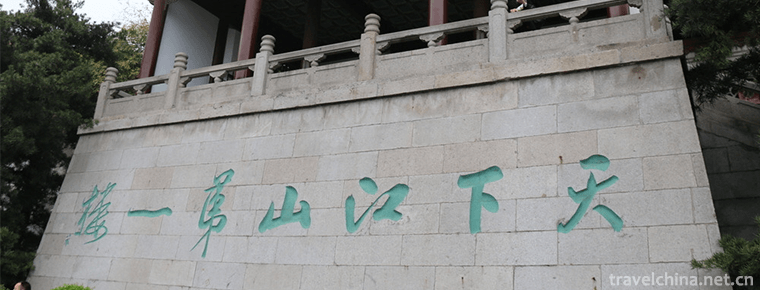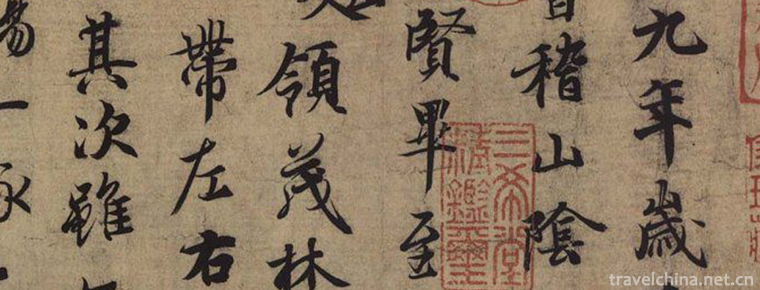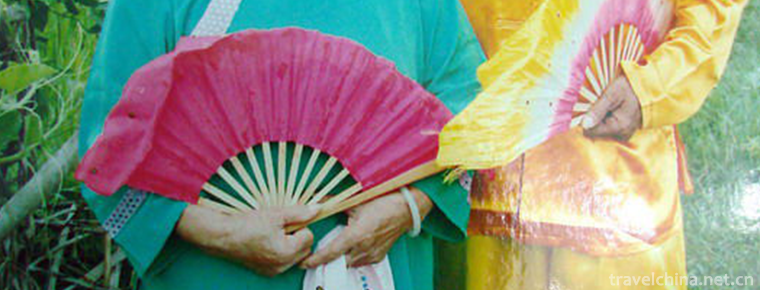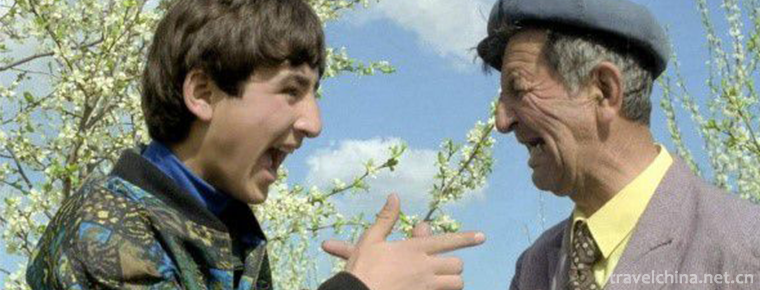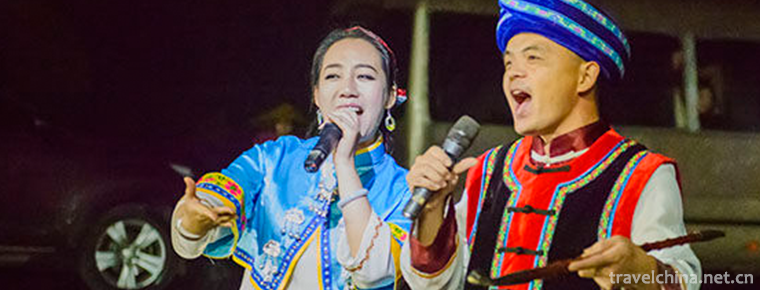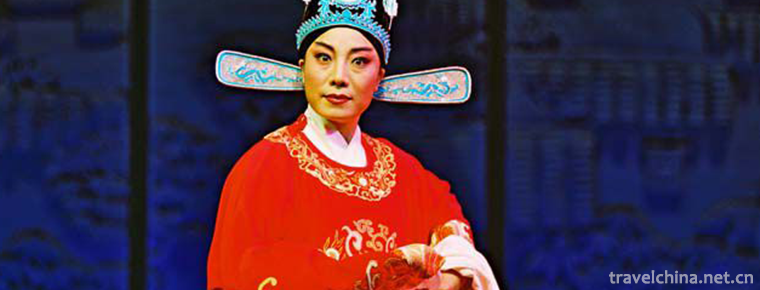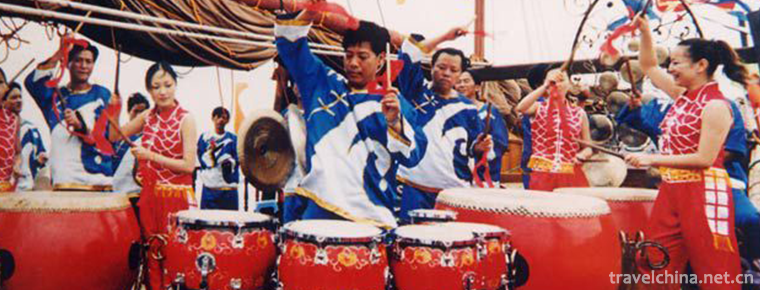Sibo Belem Dance
Sibo Belem Dance
Xibo Belem Dance is one of the national intangible cultural heritages. It is a traditional dance in Chabuchar Xibo Autonomous County, Xinjiang Uygur Autonomous Region.
"Bailun" dance is the generic name of Xibo self-entertainment dance and the first type of Xibo folk dance. It originated from an ancient dance that imitated life and production posture in the hard fishing and hunting life of the ancient Xibo people.
In June 2008, the Xibe Belem Dance was approved by the State Council of the People's Republic of China to be included in the second batch of national intangible cultural heritage catalogue, numbered III-95.
historical origin
Belem Dance is called "Dance of Life" by Xibe people. Belem dance is popular in Xibo scattered areas such as Chabchal Xibo Autonomous County, Tacheng City and Urumqi City. In Xinjiang, Bailun dance can be seen everywhere where where the Xibo people live. It is said that when the ancestors of the Xibo nationality lived in fishing and hunting in Daxing'an Mountains, they had a form of entertainment to build up their health. Now the popular folk Belem dance retains this legacy and has a strong simulation.
In the communication with all ethnic groups in Xinjiang, Belem Dance has a new vocabulary, expression and dance style. Quanfu, one of the inheritors of Sibo Belem Dance, told reporters that Belem Dance is the collective name of Sibo self-entertainment dance and the first major type of Sibo folk dance.
Yuexiang combines the Siberian Belem Dance with some songs and has created a unique set of Belem Dance. After 1970, Yuexiang has gradually been recognized by people, and has become a leader among many Belem dancers in the Siberian Autonomous County of Chabchal.
The re-creation of folk artists from generation to generation has made Belem dance a very popular and popular dance among Sibo people, and almost everyone can dance. But after many years of historical changes and the improvement of many folk artists, contemporary Belem dance has a sense of modern dance, more affinity. On the basis of retaining the original dancing style and features, through the re-creation of modern people, more than 10 kinds of "Belem" dance styles such as salute dance have been developed.
Dance features
Dance movements
Belem dancing is generally a double dance of men and women. The dancing posture is very beautiful. Its movements are mainly reflected in the upper limbs, but the lower limbs are not much. It is characterized by shoulder twisting, arm shaking, ground patting and crotch shaking. Men's dancing is rough and free, which contains some wildness. Women dance gracefully and extensively, with strong charm. Most of the Belem dances are for men to come out and dance alone for a while before inviting their female companions to enter. When men and women dance together, they cannot touch each other. Otherwise, they will be considered to be less skilled. The traditional accompaniment is the folk instruments Dongbeier and Dongbeier. The early shape of Dongbeier is similar to that of Dongbula. After moving westward and engaging in agricultural production, the Xibo people transformed it into a shovel shape with a sound quality similar to that of Horsehead piano.
Dance Style
On the basis of retaining the original dancing style and features, through the re-creation of modern people, more than ten kinds of "Belem" dance styles, such as salute dance, daughter-in-law dance and imitation dance, have been developed.
More than 20 dancing movements, such as hand-winding, chest-clapping, shoulder-rubbing and waist-washing, are unique and flexible. In marriage, marriage, friends gathering and other places, "Belem Dance" is very popular. "Belem Dance" has become popular among the people in the agricultural and pastoral areas, reaching the realm that almost everyone can dance.
Although Belem dance is a folk dance, it is always accompanied by the life of the Sibo people, but with the changes of the times, there is a trend of stage. In the words of the elder Erdenbao, it is a trend of "modern dance".
Types of Dance
Xibo people are good at singing and dancing, and their dancing styles are varied and colourful. Sibo "Maxine" and "Bailun" both mean "dance", referring to religious, creative and foreign national dance, the latter is the general name of folk dance. Bailun dance is popular in Xibo minority areas such as Chabchal Xibo Autonomous County. It has a wide range of mass and entertainment color, no choice of time, no choice of venue, as long as the lighting of the dance, musicians play the Belem dance, people will dance. The traditional accompaniment of Belem Dance is Dongbul, a folk instrument. So far, more than 10 kinds have been found:
1. Siberian: It is the basic dance of the Belem dance. The basic movements of various Belem dances are included in it. The people of Chapchal Sibo like to play "Kawulden" tune to Sibo Belem, which is a kind of Belem dance that both old ladies and old ladies like to dance.
2. Danaksoul: It's a one-step kick-and-dance with small moving range, strict requirements and solemn style, mostly performed by experts. It has special dance music.
3. Double Aksuel: The dancers tap each other with their left and right feet. They are flexible, enthusiastic and humorous.
4. Doholun Aksur: The dancer's footwork is to move his left foot first, move his left foot, move his right foot, and stop at the fourth step. Dancing steps are flexible and changeable, and can be played freely and danced in circles.
Fifth, salute dance: Sibo language "Doro Lobellon", mostly in the wedding time of men and women and the presence of VIPs happy scene performances. Its form is performed by a young man. Dancers, depending on the ethnic composition of the audience, begin to insert the etiquette movements of different nationalities into the dance steps. If VIPs come, the VIPs first salute, and then salute according to the age of the guests. Salute dancing is elegant and solemn. It shows a sense of humour from time to time, but it is full of discretion, and it is never mere vulgarity and strange salivation.
6. Clapping Dance: Its tune is called "Zack Tyrdendon". This dance is mainly performed by young men. When dancing, sometimes the hands hit the chest, sometimes the hands clap the legs, sometimes the hands in front of the head, sometimes in the left side of the chest, the right side of the photograph, can take pictures of all parts of the body. Between the two clapping movements, the interspersed dance steps are like the Northeast Yangko. Clapping hands is lively and lively, cheerful and enthusiastic, showing humorous and humorous interest from time to time. 7. Daughter-in-law dance: Sibo language is called "Hekhura Jabelun", often dancing on annual holidays and weddings. The young man danced to the girl's boudoir and waved to the window. The dog barked and caught the girl's father's eye. The old man coughed deliberately and the young man was frightened away; but he was unwilling to withdraw, and with an exaggerated expression, he jumped idly for a while, and then he came to the window again. Finally, the girl was summoned by him. She danced in pairs. She loved both men and women, and she was full of affection. Audiences cooperate with dance movements, spontaneously learn to bark, cough and whistle for the elderly. Dancers and audiences are closely related and cooperate with each other.
Eighth, imitation dance: Xibe folk also known as Ulank. It imitates many animals'movements in the dance. It is funny and exaggerated. It makes people laugh. It gives people a sense of beauty and a strong comedy flavor.
Ninth, Yerkard Dick Dance: It's purely a young dance. It can be a dance between two young men or a dance between a man and a woman. The movements are characterized by hip twisting, front and back twisting, left and right twisting, and down twisting. Only such Belem dances allow performers to speak.
10. Tea-making Dance: The Sibo language is called "Chai Fu Ibrahim Belem", which is a female dance. It imitates a housewife's daily activities such as picking up dung, carrying water, milking, tea-making and milk-making tea in the morning. Tea-making has a relaxed rhythm, delicate and gentle style.
11. Drunk Dance: The Sibo language is called "Solktor Fire Belem", which is male dance. Drunk dancing, imitating drinking, slightly dim, staggering, unable to move or even drunk posture. Dance is humorous and funny, with a sense of irony and warning.
12. Walking Horse Dance: The Sibo language is called "Maureen Bellen". This is a male dance movement imitating the horse's jogging, trotting and galloping, especially the gait of the horse walking on grass slope, water and ice, which is vivid and lifelike.
Belem dance is well-known among Sibo people. Most of the men, women, old and young can dance one or two of them.
Inheritance and Protection
Inheritance value
Bailun dance was formed in the early stage of the development of the Xibo nationality. When the ancestors of the Xibo nationality lived in fishing and hunting in the Daxing'an Mountains, they had a form of entertainment to strengthen their health. The Bailun dance retained its legacy and showed a strong simulation.
Bailun dance of Xibe nationality is an improvisational folk dance with strong popularity and self-entertainment. Everyone can perform freely according to their own specialties. There are more than ten kinds of Siberian Belem dances, including Siberian Belem for the middle-aged and the elderly, the lively and exciting Dohuron Ahsur, the salute dance Dojo Rojo Belem, the clapping dance Galasha Karajebelen, the call-in-law dance Herah Hurajebelen and so on. Belem dance music has smooth melody, happy jump, simple melody but strong sense of rhythm. After sorting out by folk artists, it forms relatively fixed dance music, which is played by the Sibo folk instrument Dongbul.
The form of Belem dance embodies the living customs and spiritual features of the Xibo people, and reflects the living conditions of the Xibo people living in harmony with nature and their life ideal of pursuing a better and happy life.
Current situation of inheritance
Belem dance is always influenced by both internal and external factors. From the perspective of external factors, contemporary China is in a period of steady economic growth, and living standards have improved significantly. The environment and life of Sibo's mother tongue are changing from tradition to modernity. The Bailun dance, which originally complemented traditional culture, is facing the danger of being impacted or even eliminated. In particular, the long-term multi-cultural influence and erosion of the traditional Siberian Belem dance, so that Belem dance is facing a crisis of inheritance. From the internal cause, the mass basis of Belem dance is very good, but its scope only exists in Yili, Xinjiang. There are few dancers who have a good command of Belem dance and can perform all kinds of Belem dance. One is that the inheritor of Belem dance has reached the age of a long time, such as the national inheritor of Yuexiang, an old artist, who is nearly eighty years old. Secondly, the form, action and performance of Belem dance by the younger generation are superficial and slightly thin. Bailun dance of Xibo nationality is in a period of green and yellow, so effective ways are urgently needed to inherit the traditional art of Xibo nationality.
Heritage figures
Yuexiang, female, was born in September 1936. The second batch of national intangible cultural heritage projects, the representative inheritor of Xibe Bailun dance, was declared by Chabuchal Xibo Autonomous County, Xinjiang Uygur Autonomous Region.
protective measures
Beginning in 2008, the No. 1 Middle School of Chabchal County has taught Belem Dance to students in PE teaching content and extracurricular activities. In September 2011, the revised version included Belem Dance in the break-time gymnastics course, and promoted Belem Dance in an all-round way. In 2013, music teachers in the school deleted excessive repetition of dance movements as needed, and reduced the dance time to 8 minutes.
The project responsibility units in Chabchal Xibo Autonomous County have formulated relevant protection measures, established heritage protection centers, carried out census work, collected materials and materials related to Belem dance, and initially established a list of inheritors. Belem dance training courses were held in the cattle records where the Xibe people live to train the successors of the younger generation. Write auxiliary textbooks to popularize Belem Dance Gymnastics in Xibo primary and secondary schools.
social influence
Important Exhibitions
In 2016, the commemoration of the 252nd anniversary of the Xibe migration to the West and the 6th Economic, Trade and Cultural Tourism Festival opened in Chabuchal Xibe Autonomous County, Yili Kazakh Autonomous Prefecture, Xinjiang Uygur Autonomous Region, in which the Xibe Belem Dance was displayed.
In 2016, the "Exhibition of Cultural Heritage in Xibo Autonomous County of Chabuchar, Xinjiang" sponsored by the Management Center of Gongwangfu, Ministry of Culture, was held in Gongwangfu, in which the Xibo Belem Dance was displayed.
Honorary recognition
On May 8, 2012, Chabchal County jointly danced the traditional Sibo dance Belem dance throughout the county to commemorate the 248th anniversary of the Xibo people's westward migration. This is by far the world's largest number of Belem dance group dance, and won the "largest in the world of Guinness".
The folk dances created by the Siberian Belem Dance for the material are put on the stage and won prizes in counties, districts and even the whole country, which is also the respect and guarantee for the stage creation.

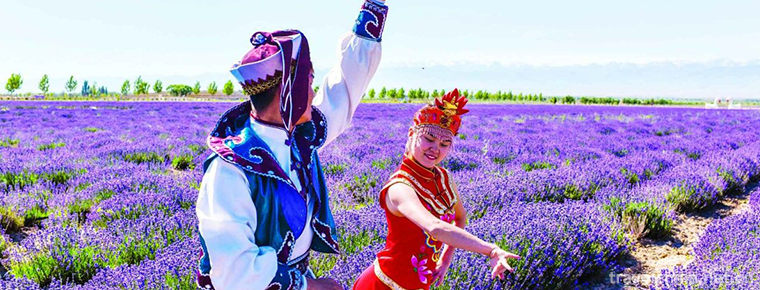
-
Huanghelou Park Wuhan
Wuhan Yellow Crane Tower Park: The Yellow Crane Tower on Snake Mountain in Wuchang is one of the three famous buildings in the south of the Yangtze River..
Views: 158 Time 2018-12-12 -
Chinese character calligraphy
Chinese character calligraphy has been recognized by the world for its brilliant civilization of 5000 years and its incomparable rich written records. In this vast and profound history,.
Views: 192 Time 2019-05-02 -
Leizhou song
According to the records in historical books, Leizhou songs were prevalent as early as the Song Dynasty. After the 1990s, people divided Leizhou dialect into different rhymes to express different cont.
Views: 84 Time 2019-05-11 -
Chak Chak
"Chuck Chuck" is a highly interactive dialogue between two or more people. According to the different content and language characteristics, it can be roughly divided into five types:.
Views: 87 Time 2019-06-10 -
Xinhua Folk Song
Xinhua Folk Song is a kind of traditional folk song mainly spread in Xinhua County, Loudi City, Hunan Province. Xinhua folk song has a wide range of contents, old style, unique style, simple rhyme, ch.
Views: 157 Time 2019-07-06 -
Bangkok in Xuzhou
Xuzhou Bangzi, one of the traditional local operas in Jiangsu Province, is named for its rhythm, which is directed by a set of drums and bangzi. The masses of Xuzhou also call it "Grand Opera&quo.
Views: 108 Time 2019-07-09 -
Zhoushan gongs and drums
Zhoushan gongs and drums are the representatives of traditional folk art in Zhoushan City, Zhejiang Province. They are based on gongs, drums, cymbals and clappers, with silk bamboo, magnificent sound .
Views: 116 Time 2019-08-10 -
Rongxian Giant Buddha
Located in the eastern suburb of Rongxian County, Sichuan Province, the Giant Buddha of Rongxian county is carved in the Tang Dynasty. It is a cliff carved statue of Sakyamuni, 36.67 meters high, 8.76 meters long, 12.67 meters wide, 12 meters high and 3.5 meters wide. It is the world's largest Sakyamuni Buddha (Modern Buddha)..
Views: 330 Time 2020-10-15 -
The second industry of Panzhihua
In 2018, the total industrial added value of Panzhihua was 69.163 billion yuan, an increase of 7.0%, and its contribution rate to economic growth was 59.7%. At the end of the year, there were 325 Industrial Enterprises above designated size. The production and sales rate.
Views: 335 Time 2020-12-14 -
Deyang City Construction
In January 2020, the science and Technology Department of Sichuan Province and the provincial development and Reform Commission approved to support Deyang and other six cities to carry out the construction of provincial innovative cities..
Views: 278 Time 2020-12-14 -
Nanchong City honor
"Three products" strategy demonstration city of consumer goods industry, charming city with Chinese characteristics, national garden city and excellent tourism city in China.
Views: 291 Time 2020-12-17 -
Dazhous location
Dazhou is located in the junction of Sichuan, Chongqing, Hubei and Shaanxi provinces and the Chengdu Chongqing Economic Belt in the upper reaches of the Yangtze River. It is the "East Gate" of Sichuan opening to the outside world and a key regi.
Views: 195 Time 2020-12-20
